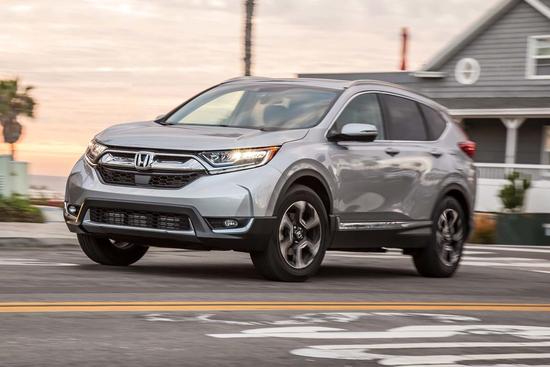Ma Ruofei
Hybrid versions of the CR-V are exclusively available in China. Recently, Honda Motor Co., Ltd., a renowned Japanese automaker, unveiled the latest generation of the Accord, a key model in both the U.S. and Chinese markets. The new Accord will continue to offer hybrid models as part of its primary lineup.
According to media reports, Honda intends to debut a hybrid vehicle based on an entirely new platform at the Tokyo Motor Show this October. Unlike previous iterations, this platform is specifically designed for hybrid vehicles, avoiding the need to retrofit existing gas-powered models. One notable advantage is that the battery will no longer occupy trunk space, addressing a significant drawback of the current Accord hybrid. For instance, the rear seats cannot fold down to accommodate extra luggage, unlike other midsize cars.
Honda also plans to broaden its hybrid product range. It’s rumored that the U.S.-spec version of the MPV minivan Odyssey will feature Honda's most advanced three-motor hybrid system, SH-AWD.
While Honda isn't a newcomer to the hybrid arena, its early attempts didn’t yield significant results. Back in 1999, the Insight sedan, equipped with the IMA system, was launched but failed to match Toyota's Prius in sales. Despite several upgrades to the IMA system, it didn't gain much traction until the introduction of the i-MMD dual-motor hybrid system in 2014, which debuted in the ninth-generation Accord.
In contrast to Toyota’s complex hybrid technology, Honda's approach is relatively straightforward. Since 1997, Toyota’s Prius has utilized the THS hybrid system, which remains foundational for all subsequent hybrids under Toyota and Lexus. This system features a planetary gear set with an integrated electric motor and generator, along with an internal combustion engine operating on the Atkinson cycle and a compact battery pack.
In essence, this setup allows the electric motor to assist during the engine's most efficient startup phase and mid-cycle acceleration. Battery power is consumed in these scenarios, while regenerative braking charges the battery during cruising or deceleration. Throughout, the engine is mechanically linked to the wheels, making Toyota's hybrids less fuel-efficient at higher speeds.
Although the concept seems simple, Toyota has secured numerous patents around this technology, limiting competition. By 2015, the Prius had sold over 8 million units globally, leaving other hybrids struggling to gain traction in broader markets.
Honda's i-MMD system eschews the planetary gear setup, relying solely on the internal combustion engine and two motors—one for generating electricity and the other for driving. At lower speeds, the engine doesn’t drive the wheels; instead, it operates efficiently to charge the battery, essentially transforming the car into an electric vehicle. Above 110 km/h, the engine takes over to drive the wheels directly, optimizing fuel efficiency. The Accord hybrid sedan, currently available in mainland China, boasts an impressive fuel economy of 4.4 liters per 100 km—four liters better than the 2.4-liter gas-powered Accord and lower than Toyota’s Camry hybrid at 5.3 liters per 100 km.

New CR-V/MotorTrend
The Accord hybrid system is now available in the domestically produced CR-V SUV, which is the world's best-selling SUV model. In 2016, it sold 750,000 units, with the U.S. and China being its primary markets. However, the CR-V models sold in the U.S. were purely internal combustion engine variants, whereas the hybrid version is exclusive to mainland China.
Spy photos suggest that Honda will soon introduce an i-MMD hybrid system for its compact SUV, the CDX, which is marketed as a luxury brand in China. This hybrid model will also be exclusive to the Chinese market.
According to consulting firm AlixPartners, consumer demand for hybrids in the U.S. dropped significantly in 2016. Hybrid and plug-in hybrid sales accounted for just 2% and 0.4% of total vehicle sales since 2015, marking the lowest point yet. The rise of shale drilling technology in the U.S. has driven down oil prices, reigniting consumer interest in high-performance vehicles, potentially explaining why the popular CR-V lacks a hybrid option stateside.
In China, however, there are currently no policy incentives for hybrid vehicles, forcing them to compete at a premium price point. Perhaps Honda aims to establish a clean energy brand image ahead of launching its exclusive electric vehicles in 2019.
48V Lithium Battery,lithium battery bicycle,Electric Bicycle Battery,lithium electric bicycle
Shenzhen Jentc Technology Co., LTD , https://www.phenyee.com